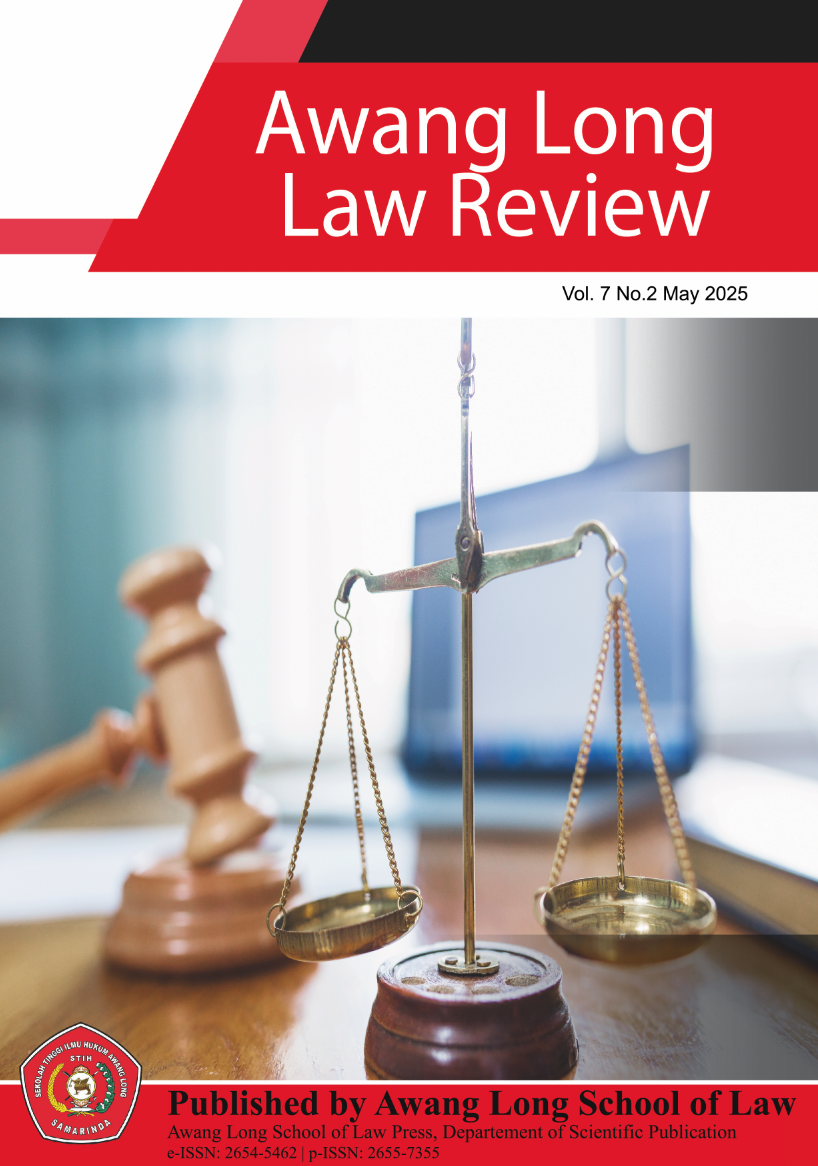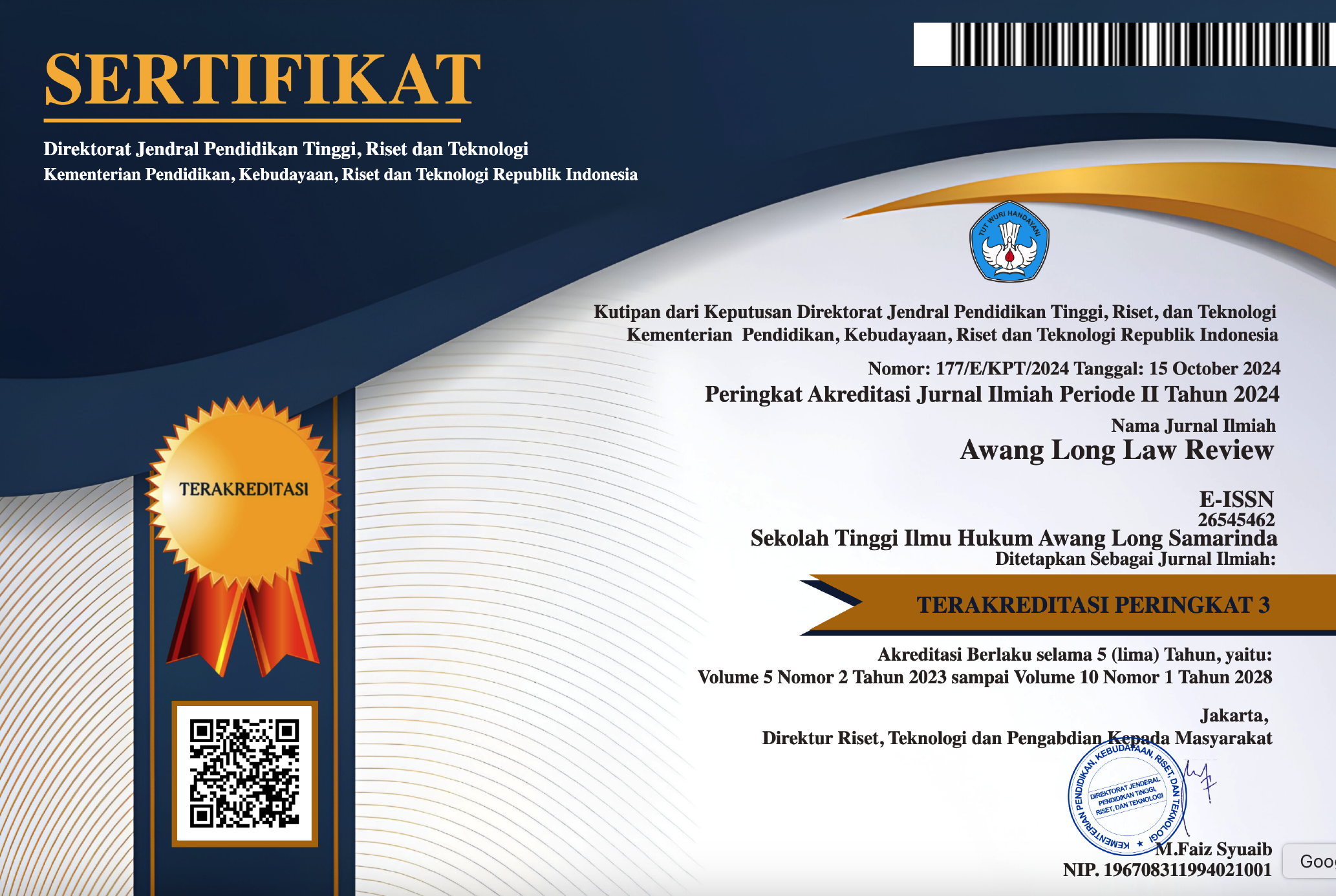LEGAL PROTECTION OF FASHION DESIGN WITH MOTIFS IN THE DIGITAL ERA AGAINST COPYRIGHT INFRINGEMENT IN THE INDONESIAN FASHION
Abstract
The introduction of digital technology into the process of creating and distributing fashion motif designs, such as the application of digital printing techniques, increasingly shows how vulnerable creative works are to copyright infringement practices. Learning and applying this technology also raises the need for adequate legal knowledge, so that there needs to be socialization and education regarding copyright among creative industry players. Along with globalization and increasingly widespread internet penetration, cases of copyright infringement are not limited to one country. The digital transformation in the fashion industry has opened up opportunities for designers to develop creative fashion motifs through digital media, but at the same time increases the risk of copyright infringement due to the ease of replication, distribution, and modification of designs online. The application of digital printing technology, for example, allows for the reproduction of motifs with high quality and speed that is difficult to monitor, thus raising legal issues if the design is duplicated without permission. The gap between advances in information technology and the legal framework for intellectual property protection and the low level of legal literacy among creative industry players further exacerbates this condition. Therefore, it is necessary to revise laws and regulations, improve monitoring mechanisms, and provide intensive education so that the copyright protection system for fashion motif designs can be comprehensively integrated. Integration between digital technology innovation and adaptive regulatory enforcement is considered the key to creating a fair, innovative fashion industry ecosystem that is able to provide proper rewards to creators.
Downloads
References
Anam, C. (2024). Legal protection of intellectual property rights in the digital industry: a review of legal developments and implementation challenges. West Science Law and Human Rights, 2(04), 358-366. https://doi.org/10.58812/wslhr.v2i04.1155
Awaloedin, D., Pradini, G., Bule, Y., &Andini, D. (2024). Impact of latest technology in mandalikamotogp tourism pr: swot review. IJEMBIS, 4(1), 545-557. https://doi.org/10.59889/ijembis.v4i1.378
Baranovska, V. (2024). Intellectual property rights in the digital age. Analytical and Comparative Jurisprudence, (1), 167-171. https://doi.org/10.24144/2788-6018.2024.01.28
Borba, M., Chiari, A., & Almeida, H. (2018). Interactions in virtual learning environments: new roles for digital technology. Educational Studies in Mathematics, 98(3), 269-286. https://doi.org/10.1007/s10649-018-9812-9
Buccafusco, C. and Fromer, J. (2017). Fashion’s function in intellectual property law.SSRN Electronic Journal.https://doi.org/10.2139/ssrn.2826201
Donahue, E. and Dykeman, C. (2021). The impact of a switch from conventional media to digital media in the treatment of vicarious trauma during art therapy..https://doi.org/10.31234/osf.io/ja9q4
Nopiyani, N. and Wiana, W. (2020).Desainaplikasiseni pop art padabusana ready to wear denganteknik digital printing.TanraJurnalDesainKomunikasi Visual FakultasSeni Dan DesainUniversitasNegeri Makassar, 7(2), 112.https://doi.org/10.26858/tanra.v7i2.13950
Nopiyani, N. and Wiana, W. (2020).Desainaplikasiseni pop art padabusana ready to wear denganteknik digital printing.TanraJurnalDesainKomunikasi Visual FakultasSeni Dan DesainUniversitasNegeri Makassar, 7(2), 112.https://doi.org/10.26858/tanra.v7i2.13950
Yurui, L., Abdullah, N., &Songrui, G. (2024). A study on digital copyright infringement in malaysia. International Journal of Academic Research in Business and Social Sciences, 14(1).https://doi.org/10.6007/ijarbss/v14-i1/20540
Yurui, L., Abdullah, N., &Songrui, G. (2024). A study on digital copyright infringement in malaysia. International Journal of Academic Research in Business and Social Sciences, 14(1).https://doi.org/10.6007/ijarbss/v14-i1/20540
Adyatma, F. (2021). Hak Cipta dalam Industri Fashion: Perspektif Hukum Kekayaan Intelektual. Jakarta: Sinar Grafika.
Dewi, N. K. (2019). "Perlindungan Hukum terhadap Desain Busana dalam Perspektif Hak Cipta di Indonesia". Jurnal Ilmu Hukum, 7(2), 135–148.
Indonesia. (2014). Undang-Undang Nomor 28 Tahun 2014 tentang Hak Cipta. Lembaran Negara RI Tahun 2014 Nomor 266.
Lestari, S. (2020). "Era Digital dan Tantangan Perlindungan Hak Cipta terhadap Karya Kreatif Desain Fashion". Jurnal Hukum dan Teknologi, 5(1), 45–60. https://doi.org/10.xxxx/jht.v5i1.9876
Putri, R. A. (2018). "Pelanggaran Hak Cipta terhadap Desain Pakaian dalam Industri Mode Indonesia". Jurnal Yustisia, 27(3), 220–234.
Rangkuti, F. (2016). Strategi Perlindungan Kekayaan Intelektual dalam Dunia Bisnis. Jakarta: Gramedia Pustaka Utama.
Safira, M. & Pranata, I. (2022). "Desain Fashion sebagai Objek Perlindungan Hukum Hak Cipta di Indonesia". Jurnal Hukum IUS, 10(1), 89–102.
Supriadi, A. (2015). Hukum Hak Kekayaan Intelektual. Bandung: Sinar Grafika.
UNCTAD. (2020). Creative Economy Outlook 2020: Trends in International Copyright Trade and Digitalization. Geneva: United Nations.
Yunus, L. (2019). "Kebijakan Pemerintah terhadap Perlindungan Desain Mode di Era Ekonomi Digital". Jurnal Hukum & Pembangunan, 49(4), 723–740.
Copyright (c) 2025 Dewi Sartika, Elvi Yanti Dwi Mas, Ekawati

This work is licensed under a Creative Commons Attribution-ShareAlike 4.0 International License.







